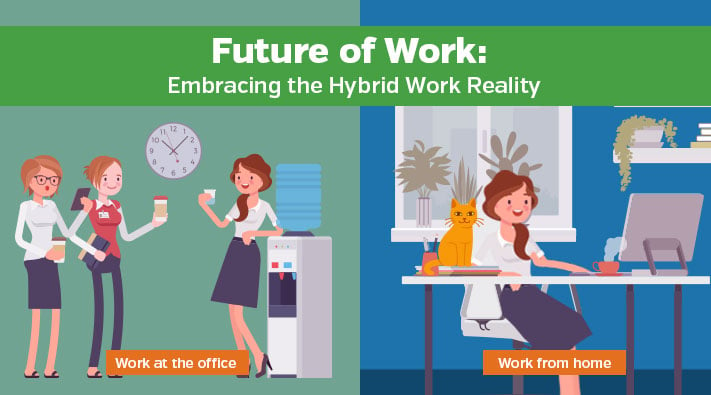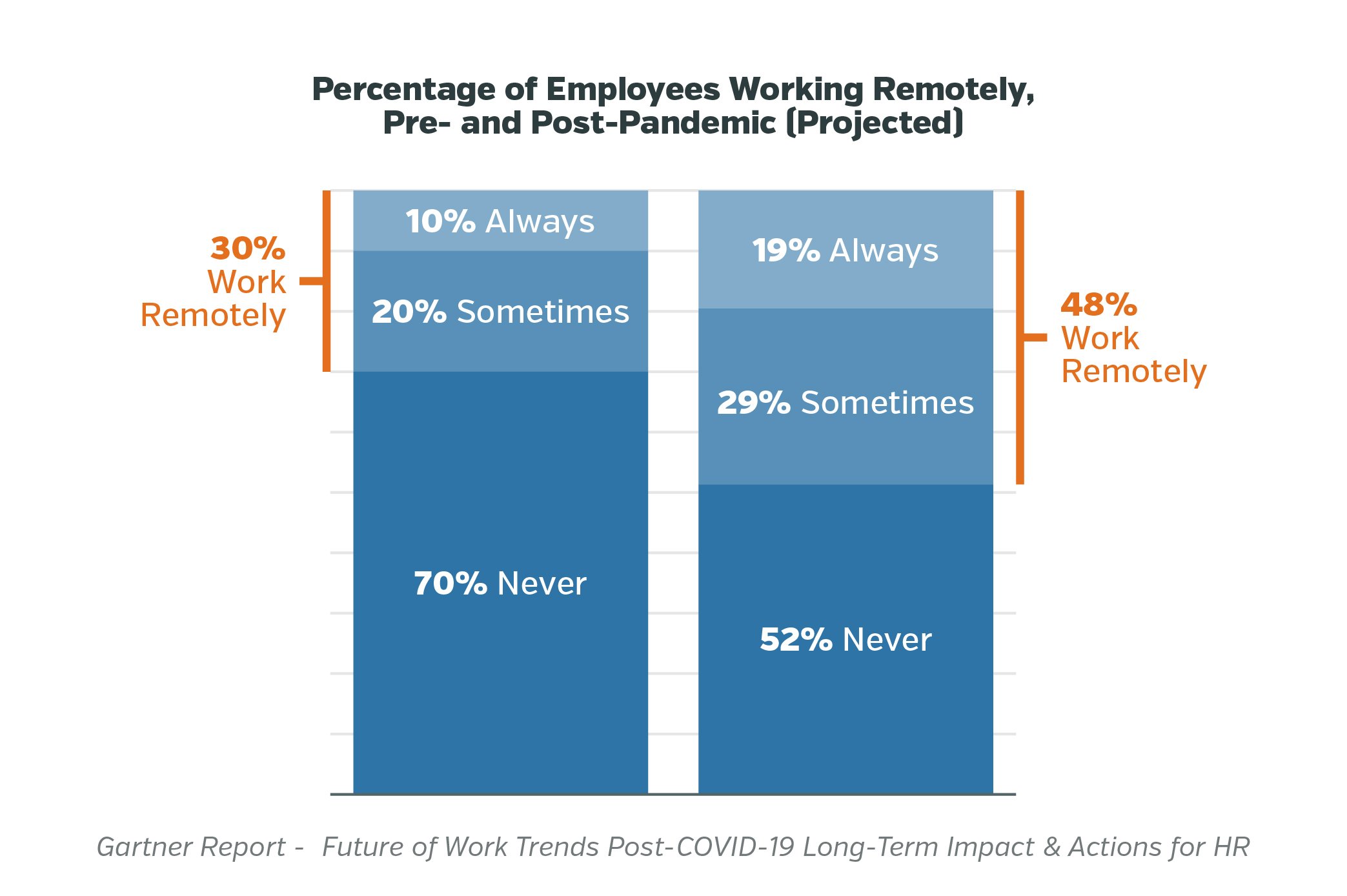COVID-19 has caused companies to look at the corporate workplace with a different lens, challenging the need for an office and questioning the value of in-person interactions.

Progressive companies based in Silicon Valley are making the move to significantly reduce and even eliminate the need for a physical office but among our clients and recent polls, we are hearing this to a lesser extent. Each company will have to determine if the value of in-person interactions outweigh the cost of real estate. Moreover, I think that the pandemic has fundamentally caused companies to rethink the role of the workplace. Will the use of the office change? Will companies reduce their footprint to capture the real estate savings?
I had the pleasure of sitting down with Eric Simonson, Managing Partner with Everest Group, to discuss the impact of COVID-19 on the Future of Work. Simonson shared that the more regulated the industry, such as financial services or healthcare, then stipulations on where and how work can be performed will return to the same or similar strict requirements as before COVID-19. For those companies that operate in a non-regulated industry, he anticipates that their risk tolerance may evolve but likely not materially enough for most companies to take a notably different approach than pre-COVID-19.
Everest Group and Gartner both have indicated that there will be a slight increase in remote work post-pandemic but for the most part companies will be returning to the office with some flexibility. Employees will be seeking greater flexibility and options to work from home in some capacity – perhaps two days a week, for example – moving us into some sort of hybrid model with employees both working in the office and working remote. I do believe that the size of the company, the maturity of their infrastructure and operations will come into play when determining their workplace strategy.
A recent Gartner analysis indicated that nearly half of the workforce or 30% will work remote at least some of the time, underscoring the rise for the hybrid work model or return to the office with a level of flexibility to continue work remote. Gartner also anticipates that there will be a slight increase or 9% of the workforce will permanently work in a remote capacity.

If companies adopt a hybrid work model allowing employees to work onsite and remote a day or two, then I think the work environment will be reconfigured to the “hoteling” model where employees can reserve an office or a workstation. Gone are the days of offices and cubicles permanently assigned to an employee. Companies could also reduce their corporate real estate footprint, recognizing that a percentage of the workforce will be remote on any given day freeing up space requirements. Next to labor, real estate is typically one of the top three expenses a company has on its income statement. In that vein, some companies may turn to their partners to provide space for their contractors or contingent/temporary workforce to shift the risk and cost burden associated with real estate as another way to capture the cost savings associated with real estate as a result of COVID-19.
Going forward, while uncertainties abound, what we are certain about is that management and communication styles will need to be adapted to fit the hybrid model of working in the office and working from home a couple of days.
What do you think? What is your vision for the workplace in 2021? Join the conversation by responding to this blog.
















